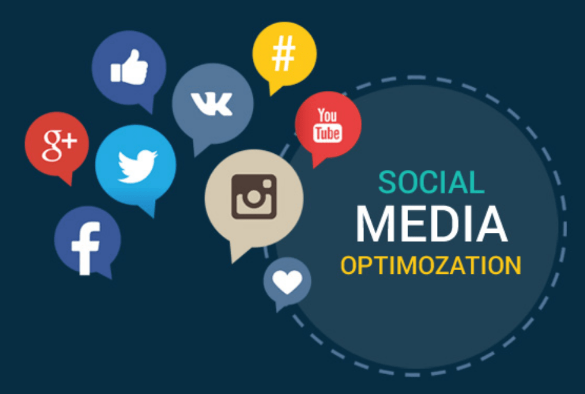Social Media Optimization: Boosting Engagement and Reach
 Hemant SEO
Hemant SEOIn today’s digital world, social media is not just a place to share photos or connect with friends; it’s a powerful tool for businesses and individuals to reach a larger audience. This is where Social Media Optimization (SMO) comes in.
SMO is all about using social media platforms to manage and grow your online presence. By optimizing your social media efforts, you can boost engagement and reach, helping you connect with more people and achieve your goals.
In this guide, we will explore what social media optimization is, why it matters, and how you can use various strategies to improve your engagement and reach on platforms like Facebook, Instagram, Twitter, and LinkedIn.

Understanding Social Media Engagement
What is Engagement?
Engagement refers to how your audience interacts with your content. This includes:
Likes: When users appreciate your posts.
Shares: When users share your content with their friends or followers.
Comments: When users express their thoughts or feelings about your posts.
These interactions are crucial because they indicate how well your content resonates with your audience.
Benefits of High Engagement Rates
High engagement rates are important for several reasons:
Enhanced Visibility: When people engage with your content, it becomes more visible to others. Social media algorithms often promote content that receives a lot of interactions, meaning more people can see it.
Strengthened Community Relationships: Engaging with your audience builds trust and loyalty. When users feel connected to your brand, they are more likely to support you and share your content.
Key Strategies for Social Media Optimization
Content Creation
Creating great content is the heart of social media optimization. Here’s how to do it effectively:
1. Types of Content that Drive Engagement
Different types of content can attract more engagement:
Videos: Short, engaging videos often capture more attention than text or images.
Polls: Ask your audience for their opinions. Polls encourage participation and provide insights into what your followers like.
Stories: Use platforms like Instagram or Facebook Stories to share behind-the-scenes content or quick updates. They are temporary and feel more personal.
2. Importance of Quality and Relevance
Always focus on creating high-quality content that is relevant to your audience. This means using clear images, well-written text, and ensuring your content aligns with your brand values. Understand what your audience cares about and provide value in your posts.
Audience Targeting
Knowing your audience is key to optimizing your social media efforts.

1. Identifying and Understanding Your Audience
Start by analyzing your current followers. Who are they? What are their interests? Use social media analytics tools to gather information about demographics, locations, and behaviors. This information helps you tailor your content.
2. Tailoring Content to Audience Preferences
Once you understand your audience, create content that speaks directly to them. If your followers are young adults, consider trends they follow. If they are professionals, focus on industry-related content.
Timing and Frequency
When you post is as important as what you post.
1. Best Times to Post for Maximum Reach
Different social media platforms have peak times when users are most active. Research suggests that:
Facebook: Weekdays between 1 PM and 3 PM.
Instagram: Mondays, Wednesdays, and Thursdays around 11 AM and 1 PM.
Twitter: Weekdays around noon.
These times may vary based on your audience, so monitor engagement to find what works best for you.
2. Balancing Consistency with Audience Fatigue
While it’s important to post regularly, avoid overwhelming your followers. Create a content calendar to plan your posts. Aim for quality over quantity—regularly share valuable content instead of posting for the sake of it.
Leveraging Analytics and Insights
Importance of Data in SMO
Data is your best friend in social media optimization. It helps you understand what’s working and what’s not.
Tools for Tracking Performance
Several tools can help you track your social media performance:
Google Analytics: Great for tracking traffic from social media to your website.
Social Media Insights: Most platforms, like Facebook and Instagram, offer built-in analytics tools to help you understand your audience's behavior.
Interpreting Data to Refine Strategies
Look at your data regularly. Identify which posts received the most engagement and try to understand why. Adjust your content strategy based on these insights. For example, if videos perform better than images, create more video content.
Engaging with Your Audience
Encouraging Interaction
Getting your audience to interact with your content is essential.
1. Asking Questions and Creating Dialogue
Encourage your followers to share their thoughts by asking questions in your posts. This invites comments and opens a dialogue. For example, “What’s your favorite product?” or “How do you feel about this topic?”
2. Hosting Giveaways and Contests
People love free stuff! Hosting a giveaway can significantly boost engagement. Ensure the rules are clear, and encourage participants to like, share, or tag friends to enter.
Responding to Comments and Messages
Engagement doesn’t stop at posting. Respond to comments and messages promptly. Thank users for their compliments, address concerns, and engage in conversations. This creates a sense of community and shows that you value your audience.
Utilizing Hashtags and Trends
Importance of Hashtags in Increasing Visibility
Hashtags are essential for expanding your reach. They categorize content and make it discoverable to users interested in those topics. Use relevant hashtags to help new audiences find your posts.
Capitalizing on Trending Topics and Challenges
Stay updated on current trends and challenges within your niche. Participating in these conversations can increase your visibility. However, ensure that your content aligns with your brand voice and values.
Best Practices for Hashtag Usage
Use a mix of popular and niche hashtags: Popular hashtags will get you noticed, but niche hashtags can attract a more targeted audience.
Limit the number of hashtags: Using too many can look spammy. Aim for 5 to 10 relevant hashtags per post.
Collaborating with Influencers
Benefits of Influencer Partnerships
Collaborating with influencers can help you reach a broader audience. Influencers have established trust with their followers, and their endorsement can add credibility to your brand.
How to Choose the Right Influencers for Your Brand
When selecting influencers, consider:
Relevance: Ensure they align with your brand values and target audience.
Engagement: Look for influencers with high engagement rates, not just a large follower count.
Measuring the Success of Influencer Campaigns
After running an influencer campaign, analyze its success. Check metrics such as engagement rates, website traffic, and new followers. This data helps you determine if the partnership was worthwhile.
Conclusion
Social media optimization is essential for anyone looking to boost engagement and reach on social media platforms.
By focusing on content creation, audience targeting, timing, and interaction, you can significantly enhance your online presence.
Remember, the goal of SMO is to create a community around your brand. Regularly assess your strategies using analytics, engage authentically with your audience, and stay updated on trends. With patience and dedication, your efforts will lead to increased engagement and a wider reach.
Subscribe to my newsletter
Read articles from Hemant SEO directly inside your inbox. Subscribe to the newsletter, and don't miss out.
Written by
